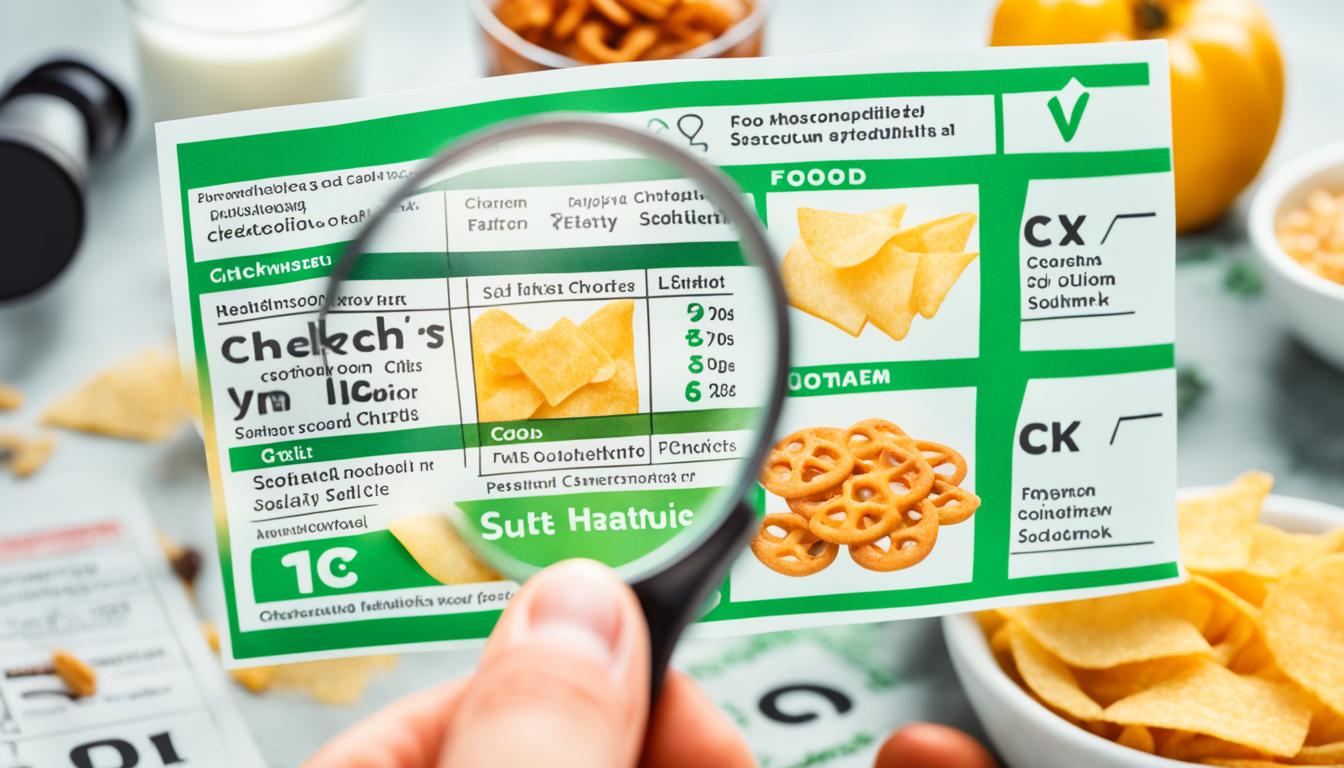Effective Blood Pressure Control Tips for Health

Did you know that high blood pressure affects nearly half of all American adults? This fact shows how important it is to manage this condition well. This guide offers tips to help you keep your blood pressure in check. It combines lifestyle changes and proven strategies for better heart health.
Hypertension is a serious condition that can cause heart disease, stroke, and kidney failure. By following these tips, you can lower your risk of these problems. This way, you can live a healthier and more active life.
Key Takeaways
- Hypertension is a common yet serious medical condition that requires proactive management.
- Effective blood pressure control can be achieved through a combination of dietary changes, regular exercise, stress management, and lifestyle modifications.
- Reducing sodium intake, maintaining a healthy weight, and quitting smoking are crucial steps in controlling high blood pressure.
- Regular monitoring and medication adherence, when prescribed, are essential for managing hypertension effectively.
- Adopting a holistic approach to blood pressure control can significantly improve cardiovascular health and reduce the risk of life-threatening complications.
Understanding High Blood Pressure
High blood pressure, also known as hypertension, affects millions of people around the world. It’s a key health issue because it can cause serious problems if not managed. These problems include a higher risk of heart disease, stroke, and kidney damage.
What is Hypertension?
Hypertension means the blood pressure is too high. This high pressure can harm the blood vessels and organs over time. The normal blood pressure is less than 120/80 mmHg. Hypertension is when it’s 130/80 mmHg or higher.
Risk Factors and Complications
Several factors can increase the chance of getting hypertension, including:
- Age: Getting older raises the risk.
- Family history: Your genes can affect your blood pressure.
- Unhealthy diet: Eating too much sodium, saturated fat, and processed foods can be harmful.
- Sedentary lifestyle: Not moving enough can lead to high blood pressure.
- Stress: Stress can make blood pressure go up.
- Excess alcohol consumption: Drinking too much alcohol can increase blood pressure.
- Obesity and overweight: Being too heavy can strain the heart.
If not controlled, high blood pressure can cause serious health issues, such as:
- Heart disease: It can damage arteries and raise the risk of heart attack and failure.
- Stroke: It can lead to blood clots and weak blood vessels, increasing stroke risk.
- Kidney damage: High blood pressure can harm the kidneys, possibly causing kidney disease or failure.
- Vision problems: It can damage eye blood vessels, leading to vision loss.
- Cognitive decline: High blood pressure may increase the risk of cognitive problems and dementia.
Knowing about hypertension, its risk factors, and complications is key. It helps in managing high blood pressure. This can lead to better health and well-being over time.
Dietary Recommendations for Blood Pressure Control
Keeping a healthy diet is key to managing blood pressure. The focus is on eating foods rich in nutrients, cutting down on sodium, and choosing foods wisely. This helps keep blood pressure at a healthy level.
Eating a balanced diet full of fruits, veggies, whole grains, lean proteins, and healthy fats can lower blood pressure. These foods are full of vitamins, minerals, and antioxidants. They help reduce inflammation, improve blood vessel function, and support heart health.
Key Dietary Recommendations for Blood Pressure Control
- Increase consumption of fruits and vegetables, aiming for at least 5 servings per day.
- Choose whole grains, such as brown rice, quinoa, and whole wheat bread, over refined carbohydrates.
- Opt for lean protein sources, including fish, poultry, legumes, and low-fat dairy.
- Incorporate healthy fats from avocados, nuts, seeds, and olive oil.
- Limit sodium intake to no more than 2,300 milligrams per day, or even lower if recommended by your healthcare provider.
The DASH (Dietary Approaches to Stop Hypertension) diet is a proven plan for lowering blood pressure. It focuses on eating nutrient-rich foods and limiting sodium, sugar, and unhealthy fats.
| Nutrient | Importance for Blood Pressure Control |
|---|---|
| Potassium | Helps balance sodium levels and supports healthy blood pressure. |
| Magnesium | Plays a role in regulating blood pressure and improving vascular function. |
| Calcium | Contributes to the proper function of the cardiovascular system. |
| Fiber | Helps maintain a healthy weight and supports overall cardiovascular health. |
By following these dietary tips and making smart food choices, people with high blood pressure can better manage their levels. This can also lower the risk of health problems related to high blood pressure.
“Adopting a heart-healthy diet is one of the most impactful lifestyle changes you can make to manage your blood pressure.”
Regular Exercise and Physical Activity
Adding regular exercise and physical activity to your daily life is key to controlling blood pressure. By doing different types of exercises, people with high blood pressure can lower and manage it better. This part will look at how exercise for blood pressure and aerobic exercises for hypertension help.
Aerobic Exercises for Lowering Blood Pressure
Aerobic exercises like brisk walking, jogging, cycling, and swimming are great for lowering blood pressure. They make your heart beat faster and help oxygen get to your body better. Doing aerobic exercises for hypertension can lower both the top and bottom numbers of your blood pressure. This helps manage high blood pressure.
The American Heart Association says you should do at least 150 minutes of moderate-intensity aerobic activity or 75 minutes of high-intensity aerobic activity each week if you have hypertension. You can do this by exercising daily or every other day, for 30 to 60 minutes at a time.
Strength Training and Flexibility Exercises
Adding strength training for hypertension to your routine can also help control blood pressure. This includes lifting weights or doing bodyweight exercises to build muscle and improve heart health. Flexibility exercises like yoga or stretching can also help. They make your body more flexible and lower the chance of getting hurt while exercising.
Try to do strength training exercises two to three times a week, focusing on big muscle groups. Mix these with regular flexibility exercises for a complete fitness plan. Always talk to a doctor or fitness expert to make sure your exercise plan is safe and right for you.
| Exercise Type | Recommended Duration | Frequency | Intensity |
|---|---|---|---|
| Aerobic | 30-60 minutes | 5-7 days per week | Moderate to Vigorous |
| Strength Training | 30-45 minutes | 2-3 days per week | Moderate to High |
| Flexibility | 10-20 minutes | 3-5 days per week | Low to Moderate |

“Regular physical activity is one of the most effective ways to prevent and manage high blood pressure. It can lower your blood pressure by 5 to 10 mm Hg, which is a significant reduction.”
Stress Management Techniques
Stress is a big factor in high blood pressure. Managing stress well can help control blood pressure and boost heart health.
Mindfulness and Meditation
Mindfulness and meditation are great against stress and high blood pressure. They help you stay in the moment and handle stress better. Studies show that regular meditation lowers blood pressure by easing the stress response.
- These techniques, like focused breathing and body scans, make you more aware of your body and feelings. This helps you deal with stress better.
- Guided meditations and mantras can put you into a deep calm state. This can lower your blood pressure.
Relaxation Exercises and Deep Breathing
Relaxation exercises and deep breathing are also key for stress and high blood pressure. They activate the “rest and digest” system in your body. This helps fight the stress response.
- Deep breathing, like diaphragmatic breathing, lowers blood pressure by relaxing you and reducing stress hormones.
- Progressive muscle relaxation helps ease muscle tension and stress.
- Guided imagery and visualization take you to a peaceful place, reducing stress.
Adding these stress management methods to your daily life can help control blood pressure and improve heart health.
“Stress management is not about learning how to avoid or escape the pressures of life, but rather about learning to respond to them in a way that enhances our health and well-being.”
blood pressure control tips
Keeping your blood pressure healthy is key for your overall health. There are many lifestyle changes you can make to manage high blood pressure. By following these blood pressure control tips, you can boost your heart health and lower the risk of serious problems.
Dietary Adjustments
Changing what you eat is a big step in controlling blood pressure. Eat more fruits, veggies, whole grains, and lean meats. Cut down on sodium, saturated fats, and sugars. The DASH diet is great for lowering blood pressure.
Regular Exercise Routine
Regular exercise is a strong way to fight hypertension. Try to do at least 30 minutes of moderate exercise like walking, cycling, or swimming every day. Mixing in strength and flexibility exercises can help even more.
Stress Management Techniques
High stress can hurt your blood pressure. Using stress-lowering activities like meditation, deep breathing, and relaxation can help. It’s key to find healthy ways to handle stress for better blood pressure.
Weight Management
Keeping a healthy weight is vital for controlling blood pressure. Losing weight if you’re overweight can really help your blood pressure. Eat well and stay active to keep a healthy weight.
Reducing Sodium Intake
Too much sodium is bad for your blood pressure. Check food labels, pick low-sodium foods, and eat fewer processed foods to cut down on sodium. This helps keep your blood pressure in check.
Smoking Cessation and Alcohol Moderation
Stopping smoking and drinking less alcohol are big wins for hypertension management. Smoking and too much alcohol can raise your blood pressure and increase heart risks. Getting support and making these changes can really help your blood pressure.
By using these blood pressure control tips, you can play a big part in managing your high blood pressure. Always talk to your doctor to create a plan that fits your needs and health risks.
Reducing Sodium Intake
Lowering your blood pressure often means making several changes, including cutting down on sodium. Too much sodium can lead to high blood pressure. By choosing foods wisely, you can lower your blood pressure and boost your heart health.
Reading Food Labels
Start by reading food labels carefully. When you’re shopping, look at the nutrition facts on packaged foods. Focus on the sodium content. Try to pick items with less than 140 milligrams per serving. Also, pay attention to how much you’re actually eating, as the serving size might be more than you think.
Low-Sodium Diet Strategies
Following a low-sodium diet can help manage high blood pressure. Here are some tips:
- Limit processed and canned foods, which tend to be salty
- Choose fresh, whole foods like fruits, veggies, and lean meats
- Use herbs, spices, and lemon juice for flavor instead of salt
- Go for low-sodium or no-salt-added condiments and broths
- Rinse canned foods to cut down on sodium
- Avoid snacks like chips, pretzels, and salted nuts
These changes can greatly reduce your sodium intake. This is a big step towards better blood pressure control.
| Food Item | Sodium Content (per serving) |
|---|---|
| Canned Soup | 450-900 mg |
| Processed Deli Meat | 300-1,050 mg |
| Frozen Entree | 600-1,200 mg |
| Canned Vegetables | 240-360 mg |
| Fresh Chicken Breast | 50-75 mg |
This table shows how much sodium is in different foods. It’s clear that reading labels and making smart choices are key to lowering your sodium intake for hypertension.

“Reducing sodium intake is one of the most effective dietary changes you can make to lower your blood pressure and improve your cardiovascular health.”
Maintaining a Healthy Weight
Keeping a healthy weight is key to controlling blood pressure. Being overweight puts extra strain on the heart, raising blood pressure. This link between obesity and high blood pressure is clear.
To manage weight for better blood pressure, a mix of diet and exercise is best. Making lasting lifestyle changes can help you stay at a healthy weight. This is good for your heart health.
Adopting a Balanced Diet
For weight control, focus on a diet full of nutrients. This means:
- Eating whole foods like fruits, veggies, whole grains, and lean meats.
- Reducing foods high in bad fats, sugars, and salt.
- Watching how much you eat and being aware of calories.
- Adding more plant-based foods to feel full longer.
Engaging in Regular Physical Activity
Exercise is vital for managing weight and blood pressure. Doing aerobic exercises like walking, swimming, or biking helps. Adding strength training also keeps you fit and at a healthy weight.
| Exercise Type | Benefits for Blood Pressure Control |
|---|---|
| Aerobic Exercises | Boost heart function, aid in weight control, and lower blood pressure. |
| Strength Training | Build muscle, increase metabolism, and help with weight management, which helps blood pressure. |
By eating right and exercising, you can control your weight. This is a big step towards managing blood pressure and lowering risks from obesity, and high blood pressure.
“Maintaining a healthy weight is not just about fitting into a certain size; it’s about taking control of your health and reducing your risk of serious conditions like hypertension.”
Smoking Cessation and Alcohol Moderation
Managing blood pressure well means looking at lifestyle habits like smoking and drinking. Quitting smoking and drinking in moderation can greatly help with high blood pressure and heart health.
Kicking the Smoking Habit
Smoking is a big risk for high blood pressure and heart disease. But, quitting can really help lower blood pressure levels. After just one year without smoking, your risk of heart disease drops by half.
Quitting smoking works best with a mix of methods. This includes nicotine replacement, counseling, and support groups. With a good quit plan and the right support, quitting smoking is more achievable.
Moderating Alcohol Intake
Drinking too much alcohol can also affect blood pressure. While a little alcohol is okay, too much can raise blood pressure. Cutting down or stopping drinking can lower blood pressure and reduce health risks.
- Try to have no more than one drink a day if you’re a woman, and no more than two if you’re a man.
- Choose drinks with less alcohol when you can.
- Get help from doctors or community groups to manage your drinking.
Changing your lifestyle, like quitting smoking and drinking less, can help manage blood pressure and heart health. These changes, along with other proven methods, are key in fighting high blood pressure.
“Quitting smoking and reducing alcohol consumption are two of the most impactful lifestyle changes an individual can make to support healthy blood pressure levels.”
Medication Adherence and Follow-Up
Managing high blood pressure often means making lifestyle changes and taking medications. It’s important to know how blood pressure medications work and why sticking to them is key. This helps control blood pressure and lowers the risk of serious health issues.
Understanding Blood Pressure Medications
There are many types of blood pressure medications, each targeting different parts of the heart and blood vessels. Some help the kidneys get rid of extra fluid, while others relax blood vessels. It’s important for patients to understand their medications and their effects. They should also take their medications as told by their doctors.
Monitoring and Tracking Blood Pressure
Checking blood pressure regularly at home and during doctor visits is crucial for managing high blood pressure. Keeping track of readings helps patients see patterns and how lifestyle changes affect their blood pressure. This information helps patients and their doctors adjust treatment plans.
Using home blood pressure monitors makes it easy for patients to stay on top of their health. This leads to better health outcomes over time.
FAQ
What is hypertension and what are the risk factors?
Hypertension, or high blood pressure, is a condition where blood pressure is too high. It can be caused by family history, age, being overweight, not moving enough, eating poorly, drinking too much alcohol, and smoking.
What are the potential complications of uncontrolled high blood pressure?
High blood pressure that is not controlled can lead to serious health issues. These include heart disease, stroke, kidney damage, and vision problems.
What dietary changes can help control blood pressure?
To control blood pressure, eat less sodium and more fruits, vegetables, and whole grains. Also, cut down on saturated and trans fats.
What types of exercises are effective for lowering blood pressure?
Aerobic exercises like walking, jogging, and swimming help lower blood pressure. Strength training is also good. Doing both types of exercises is best.
How can stress management techniques help control blood pressure?
Stress can raise blood pressure. Managing stress with mindfulness, meditation, and deep breathing can help keep blood pressure in check.
What are some effective tips for reducing sodium intake?
To eat less sodium, read food labels, pick low-sodium foods, and avoid processed and canned goods. Use herbs and spices instead of salt to season your food.
How can maintaining a healthy weight impact blood pressure?
A healthy weight comes from eating right and staying active. This helps control blood pressure and keeps your heart healthy.
What are the benefits of quitting smoking and moderating alcohol consumption for hypertension management?
Quitting smoking and drinking less can lower your blood pressure. It also reduces health risks. These changes are good for your heart.
Why is medication adherence important for managing hypertension?
Taking your blood pressure medicine as told and checking your blood pressure at home is key. It helps manage high blood pressure and lowers health risks.






